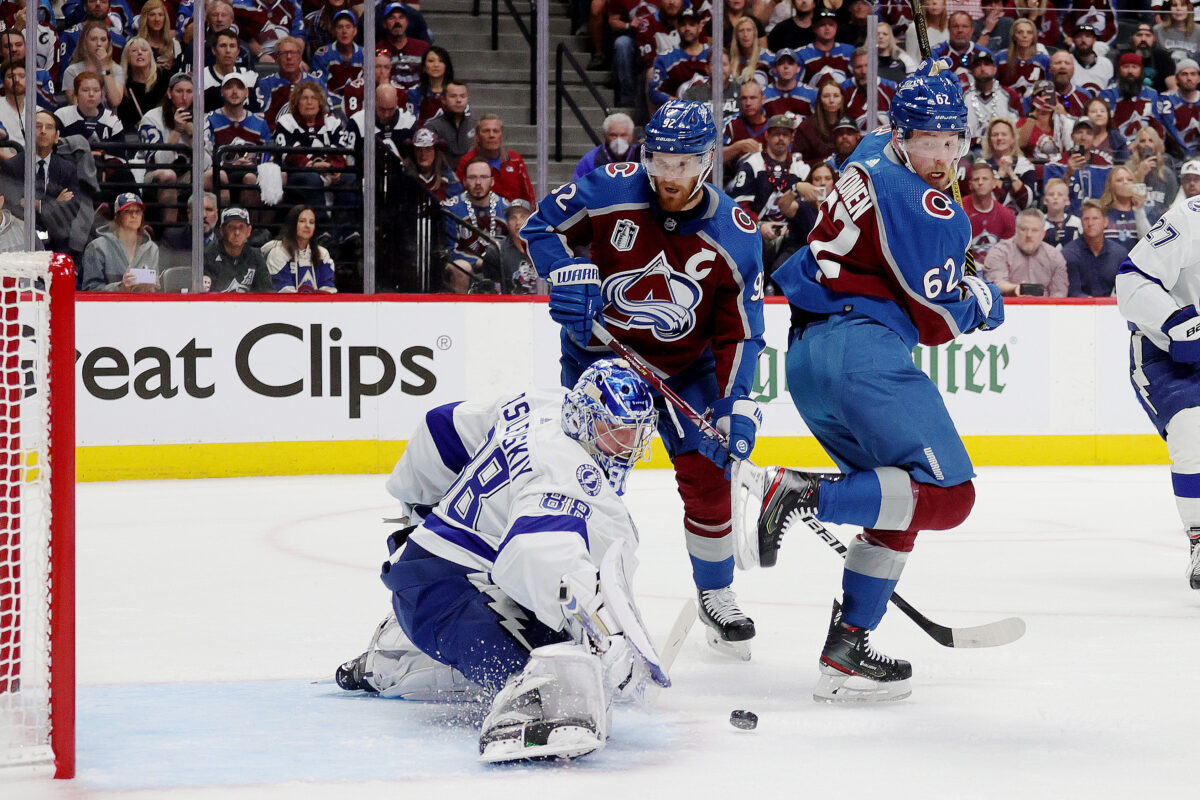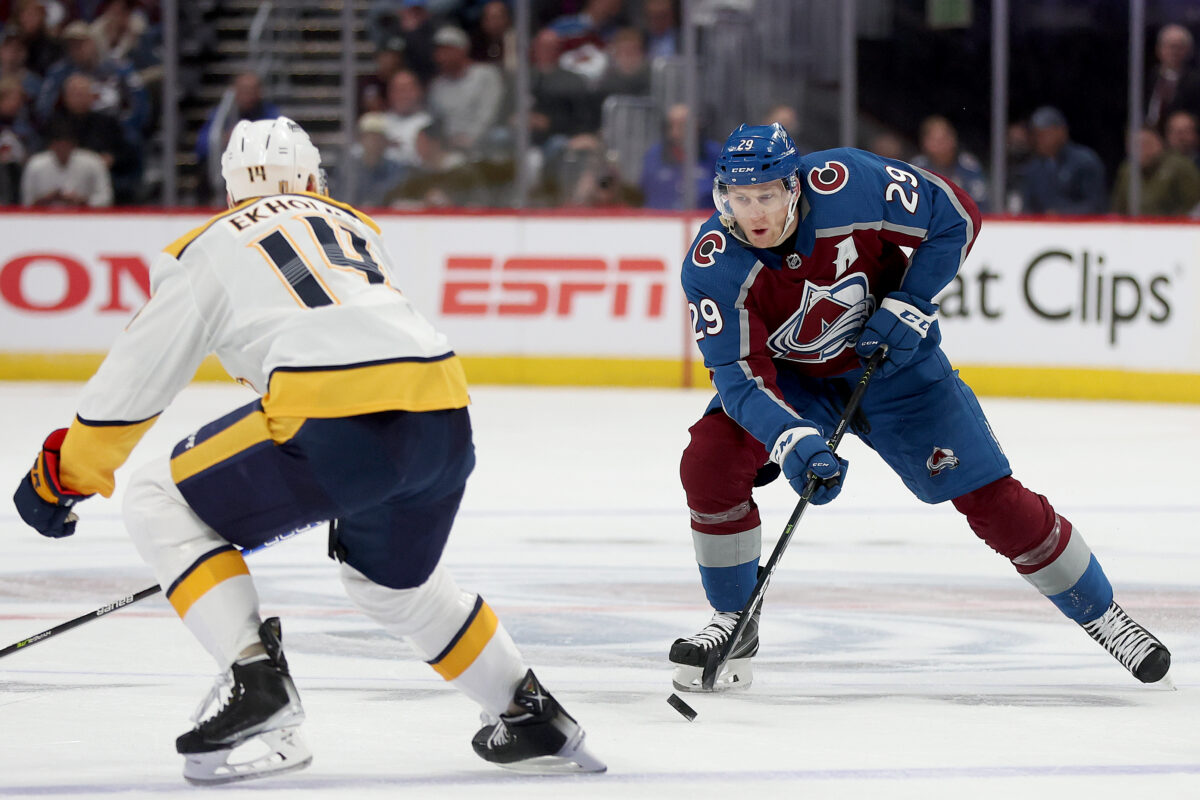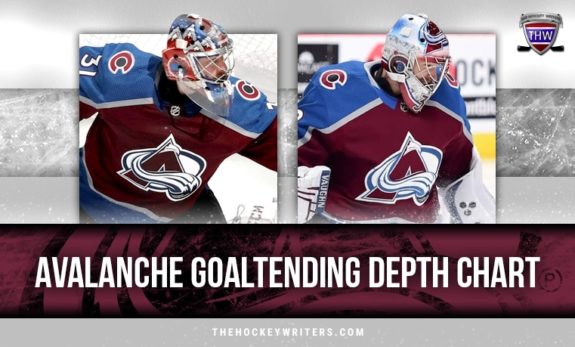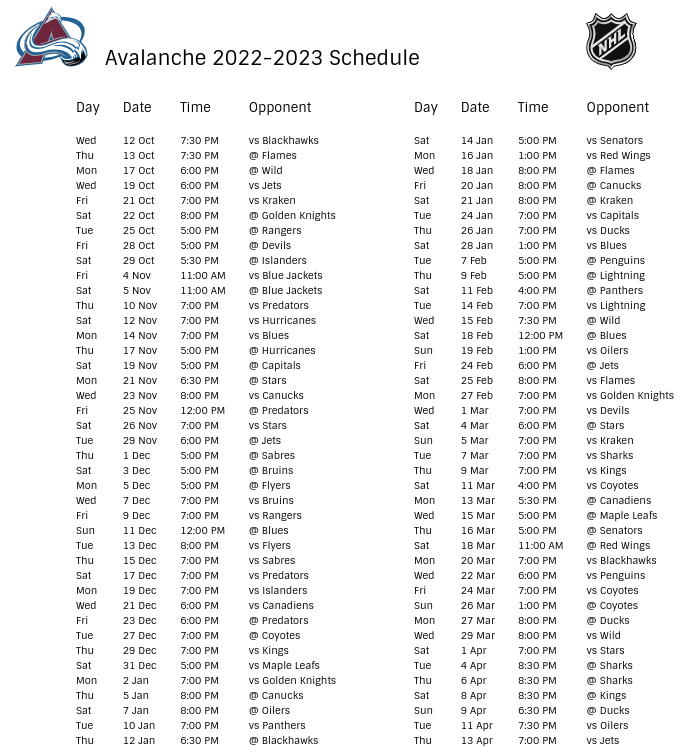The Colorado Avalanche are favorites to repeat as Stanley Cup champions this season, and one only needs to point at the game against the Chicago Blackhawks to show why. The Avalanche play aggressively, on top of the puck, and have possession so often that they generate an incredible number of high-quality chances.

A check-in on the overall state of the team and its situation will give a better idea of what to expect in the early going. Overall team health, positional strength and depth, and the regular season schedule all have a role to play. It feels like they are poised for a great chance to repeat, but nothing is promised in the hard world of professional hockey.
Are the Avalanche Healthy?
The Avalanche are incredibly healthy considering they just won the Stanley Cup. During the Cup run, the team only lost four times which is, in itself, an incredibly dominant performance. Minimizing the amount of energy required also limited their chances of injury, so they came out of the gauntlet without a lot of major injuries.
That said, no team survives a deep playoff run unscathed. Valeri Nichushkin had a really good opening night – here’s hoping he doesn’t re-aggravate this scary-looking injury. It’s one thing to play through this in the Cup Finals and another to deal with it in the regular season.
Gabriel Landeskog – who seemingly can play through anything – is too banged up to even skate. Having some depth might be able to make up for his absence in the short term, especially if the top-six stays hot, but the season is long and injuries happen. Both he and Darren Helm are on the long-term injured reserve list with no slated timetable for their return.
Nathan MacKinnon and J.T. Compher were day-to-day recently. If a player in the NHL isn’t day-to-day at some point during the season they are either a healthy scratch all the time, made of solid granite, or just aren’t involved enough in the play to contribute in any meaningful way.

There is a question about whether MacKinnon’s ”tweak in practice” was related to the hard slash on his wrist during the last preseason game against the Dallas Stars. Wrist injuries are incredibly hard to deal with. Hopefully it’s nothing to worry about.
It doesn’t appear poor health will be a significant hindrance at the season’s outset, though not having Landeskog for a prolonged period will end up being a challenge eventually.
How Do the Avalanche Stack Up Positionally? How Is Their Depth?
Recently The Hockey News ranked the top 50 players in the game today. They put MacKinnon and Cale Makar in the top five and included Miko Rantanen in the top 20. Not too shabby, but I think they might have considered putting Makar first. As great as MacKinnon is, Makar just affects every aspect of the game at a historic level:
Being the quickest defenseman to reach 200 points is an eye-opener. He would have a better start than Bobby Orr, Phil Housley and Ray Bourque. Even better than Paul Coffey during the era when Wayne Gretzky topped 200 points in a season on four separate occasions.
Perhaps the most impactful aspect of the Avalanche’s depth chart is four top-six forwards (MacKinnon, Rantanen, Landeskog, Alex Newhook) capable of playing the center ice position. This incredibly well-constructed team can absorb two injuries to their top-six centermen and still make the playoffs.

The greatest strength of the Avalanche (which is incredible to say considering how strong their top six forwards are) is their defense. Makar is the best defenseman in the league by a good stretch and is the favorite to win the Norris Trophy again this season. He leads a squad that, position by position, is fantastic. Devon Toews would be on any top pairing in the league, and youngsters Sam Girard and Bowan Byram are already battle-tested. In their game against the Blackhawks, not one player on defense ended up with a minus in the plus/minus column.
Related: Avalanche Takeaways from Opening Night
Some pundits might say there are two goalies on the team with something to prove, but I’m not sure I agree. The blueprint for winning in the NHL Playoffs has been changed by the team Joe Sakic built. Last year, Darcy Kuemper was hardly a world-beater, and in the playoffs, his goals-against average (GAA) was 2.59, and his save percentage (SV%) was .902. Those numbers would run a star goalie out of town, but neither Pavel Francouz nor Alexandar Georgiev will be confused with one of those.
Although Francouz has numbers that are slightly better than Kuemper, that seems immaterial at best. Neither he nor Georgiev should expect much support from an Avs team that is not built for intense defensive contests. The numbers through their first two games bear this out. Georgiev had a SV% against the Blackhawks of .882 and the Avalanche still won 5-2. Against the Calgary Flames, Francouz had a SV% of .815 and they lost 5-3.

I wouldn’t put either result on the goaltender, this position is simply a weakness in this roster. Every team has one. If the Avalanche’s formula relies on puck possession and generating high-quality scoring chances, they will likely lose on their off nights unless one of their goalies really heats up.
Related: Avalanche Get Long Term Starter in Georgiev Trade
In this category, the Avalanche show terrific depth and positional strength in two of three positions. History has shown that it’s the right two.
How Challenging Is the Avalanche’s NHL Schedule?
Here is the other place where I feel the Avalanche have a significant challenge – their schedule. It is as risky as shredding cheese without a steel glove. No matter how careful you are there’s gonna be a nick or two. In just a few days, the Avalanche have a looming stretch of seven games in 12 nights against these teams:
- Minnesota Wild
- New York Rangers
- New York Islanders
- Vegas Golden Knights
- New Jersey Devils
- Seattle Kraken
There are a few easier matches in there, but that’s a lot of hockey. There is also a stretch in November with 10 games in 19 days including dates against:
- St. Louis Blues
- Washington Capitals
- Dallas Stars (twice)
- Nashville Predators
And in December between the 3rd and 23rd, they will play every two nights. The quality of the competition isn’t as high in that stretch, but it is still a grind that will indicate the durability level of this team.

Overall, it’s a game nearly every two nights from now until Christmas. That feels like alot.
With such a young and versatile core, the salary cap about to go up, and key players signed long-term, the team and its fans should be full of confidence that a dynasty is not out of the question. Given the incredible strength of the organization in nearly every other facet of the game, it seems possible. The greatest challenge might come from getting through December without the injury bug doing too much damage.